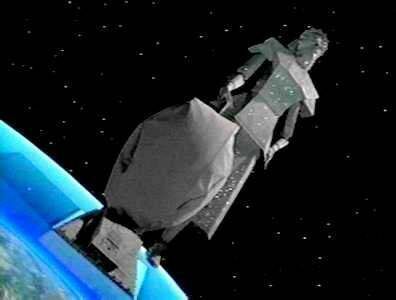Originally published at: https://boingboing.net/2020/07/13/rock-dust-spread-on-farmland-c.html
…
Who sweeps up the dust afterwards? That ain’t easy. And then you’ve got to buy carbon offsets for flying in the requisite Finnish consultants …
Ah yes, the endless parade of band-aid fixes to cover up the issue at hand: large scale farming is not sustainable.
The Netherlands would like a word with this statement. https://www.nationalgeographic.com/magazine/2017/09/holland-agriculture-sustainable-farming/
Yeah, those amazing, vast, super-smart greenhouses look totally affordable.
No. The American-style family farm is not sustainable. Indigenous people were doing large scale farming centuries before the Europeans showed up and failed to recognize it. Hutterite-style collectives are sustainable and more efficient, which is why the family farmers work so hard to get them banned.
The inefficiencies and unsustainable aspects of “modern” farming have nothing to do with the scale.
OK, we’ll use your term then. “Scale” was a poor choice on my part. Still, “American-style family farm” is quite broad and vague.
billions of tons of carbon dioxide
Is that a lot?
Time out, seems like you’ve moved the goalposts a bit there.
I think I may understand your perspective here, and I’m with you. American AG is a gross mess. We can’t afford not to fix it.
I hope that maybe one day we can start to view things not based on what they cost, but what the return on that cost provides.
Yeah, we’re basically saying the same thing. Good way to put it, there.
The same people who rake the forests
Congrats on catching the implied reference. I wondered if it was a bit too subtle 

I’m dubious until I see how much carbon is released in collecting the dust, getting it to the fields, and spreading it.
Maybe I’m being overly cautious, but are we sure we want to make a habit of spreading mine waste all over the place?
This sounds less like a solution to global warming than a mining corporation’s idea of a solution to certain other problems:
So according to table 1 in the paper, using this method to sequester CO2, costs 160 USD per 1000 kilograms (2204.62 pounds) of CO2 removed from the atmosphere at the lowest level of removal (0.5 gigatonnes per year).
If you burn 349 US gallons of gasoline you get 2204 pounds of CO2.
A Chrysler minivan gets 25 mpg on the highway (Very close to US average fuel economy), and the average person in the US drives 14,400 miles per year. So if the government was to spend 160 dollars they would capture 8746 miles worth of your minivan driving.
So we would need to spend 837 dollars per driving person in the US just to break even. that’s $185,702,586,024 for all 221.7 million drivers in the US, approximately what we spent on the Iraq war in 2008.
sounds great right?
Agreed. At first glance, this sounds suspiciously like the oil companies adding MTBE to gasoline in order to “reduce pollution”. (Arrested Development Narrator Voice… “It didn’t”)
Rock, Rock,
Rock Duster!
Down! Down!
In the Netherlands it’s all about increasing yield while decreasing land use. So not just blindly scaling up your production area if you want to produce more (a luxury that’s not available in the Netherlands) but producing more with less land, water, pesticides, etc. Really nice article.
I don’t know about this sequestering technique, but as I understand it the rock will just become part of the soil, no need to sweep it up ![]()
I agree that this can come off as a band-aid that allows us to postpone taking real action. I think it’s good to be skeptical of plans like this because of that. I also think that we are going to need all the solutions at the same time, so I welcome this idea as part of a bigger plan.
The neat thing about doing your work using non metric units is that all those conversion factors add a few more decimal points of precision, making your back of the envelope calculations sound more credible.